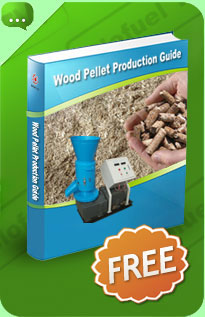Wood Pellet Machinery
The wood pellet machinery is simply a portion of the wood pellet equipment needed for the pellet making process. You'll need some way of making the wood particle size of your raw material smaller than about 3 mm. or the wood pellet mill will probably be under unnecessary stress.
Wood pellets for pellet stoves should be 1 / 4 of an inch in diameter and about an inch long to be usable by the majority of pellet stoves. Ash content is specified to be below 1% for premium grade pellets, and less than 3% for standard grade pellets. Simply taking off the bark from the timber will achieve premium grade pellets in wood.
Other potential pellet materials like grass and paper have higher levels of impurities and so a higher ash content. These materials are usable, but only in stoves designed to cope with high levels of ash.
Hammer Mills
The tool that most reliably pulverizes timber to a pelletable size is the hammer mill. This machine usually is made up of rotating axle to which metal 'hammers' are attached and allowed to slide so that as the axle turns, the hammers flail down on the raw wood waste. They are provided with mesh screens that allow material of the desired finished size to fall through into a collection drum.
Materials and Binding
Moisture content for the wood pulp is vital to the wood pellet machinery operation. Ideal water content for pelletizing is from 12 to 14%. Larger scale machines have dispensers that may automatically add moisture in the form of steam to dry raw materials as well as conditioning/binding agents. The moisture content needed to make the material malleable will later need to be reduced.
The heat produced by larger wood pellet machineries is enough to allow the lignin content of the timber to plasticize and become a glue to hold the pellets together. Smaller machines need a binder, (usually a vegetable oil), to hold the pellets together. Pellets which don't hold together produce excessive fines, (dust), and can clog the auger mechanism in pellet stoves.
Small Pellet Machines
Wood pellet machineries are available in two configurations: flat die and ring die. In flat die machines, the die is stationary and rollers push the material through. In ring die machines, a drum-like die rotates round the rollers. A knife cuts the pellets to length as soon as they leave the die.
Drying Wood Pellets
After pellets leave the machine, they will need cooling to give them physical strength, and drying to enable them to be burnt in pellet stoves. Dryers are available but economics of heating a dryer may not be cost-effective. If covered space is available, with a good airflow, pellets can simply be spread out to dry, turning as needed until moisture content is down to 10%.
Dies and Lubrication
Wood pulp for pelletizing is an abrasive substance and the dies used to produce wood pellets have to be viewed as consumable items. The natural resins present in softwoods are easier on dies than hardwood pulp, and high moisture content keeps the material soft, helping to prevent wear. As well as helping as a binder, vegetable oil can also help to reduce wear on the die.
A source of replacement dies is a priority to keep the machine running.

